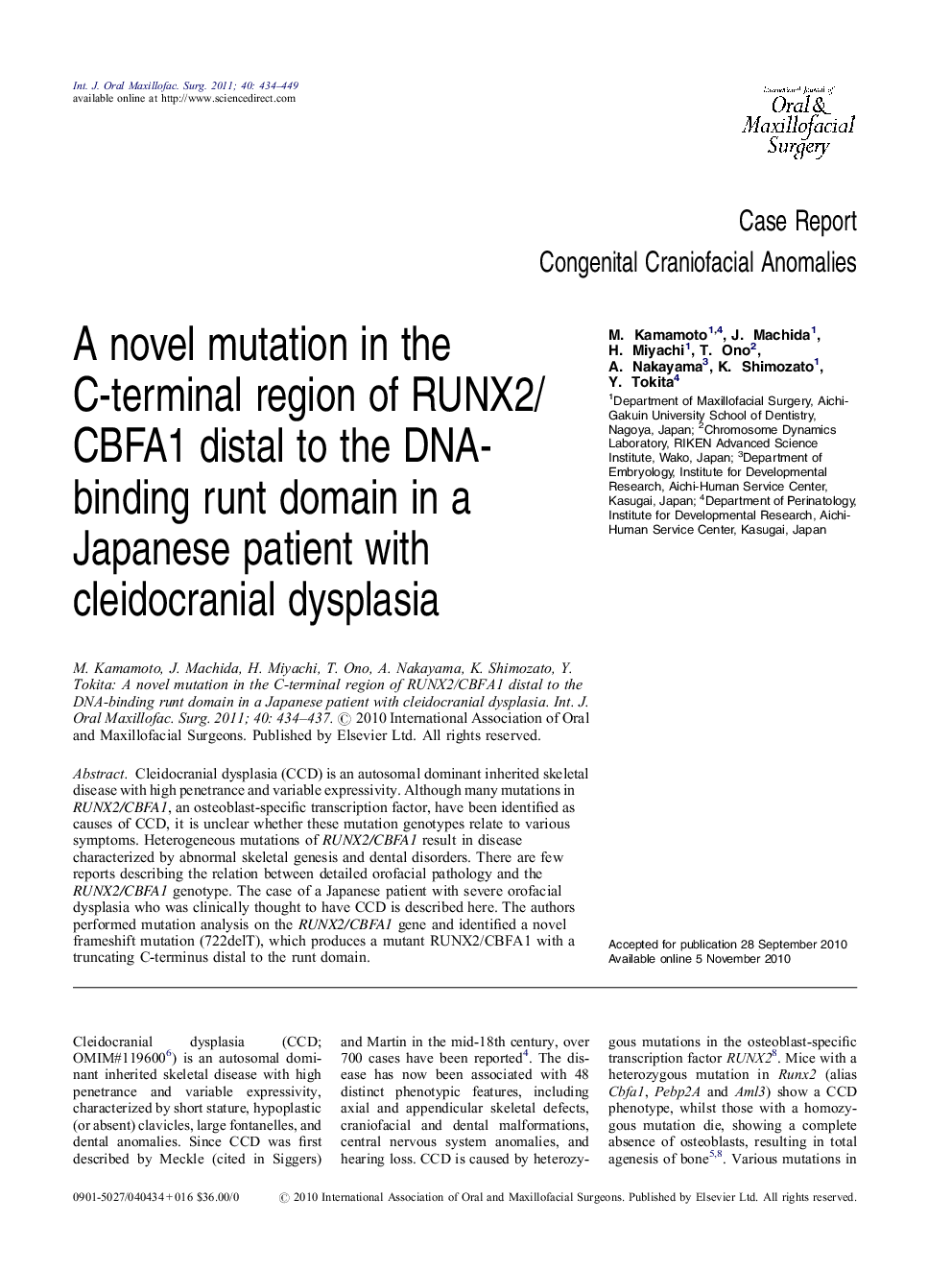| Article ID | Journal | Published Year | Pages | File Type |
|---|---|---|---|---|
| 3133339 | International Journal of Oral and Maxillofacial Surgery | 2011 | 4 Pages |
Cleidocranial dysplasia (CCD) is an autosomal dominant inherited skeletal disease with high penetrance and variable expressivity. Although many mutations in RUNX2/CBFA1, an osteoblast-specific transcription factor, have been identified as causes of CCD, it is unclear whether these mutation genotypes relate to various symptoms. Heterogeneous mutations of RUNX2/CBFA1 result in disease characterized by abnormal skeletal genesis and dental disorders. There are few reports describing the relation between detailed orofacial pathology and the RUNX2/CBFA1 genotype. The case of a Japanese patient with severe orofacial dysplasia who was clinically thought to have CCD is described here. The authors performed mutation analysis on the RUNX2/CBFA1 gene and identified a novel frameshift mutation (722delT), which produces a mutant RUNX2/CBFA1 with a truncating C-terminus distal to the runt domain.
